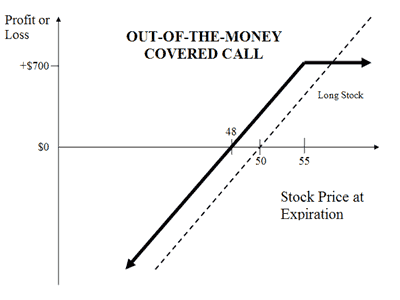

With barcoding, you still need to consider the application and surface on which your label or tag will be used, but a barcode won’t simply become unreadable based on the material or contents of the item. RFID requires different types of tags depending on the characteristics of the item itself, whereas one type of barcode label can be used on different assets. For libraries that are trying to do more with less, this technology offers a more accurate and efficient way to get books back out on the shelves. RFID technology can increase the efficiency of the book checkout and return process. At the checkout desk, you typically scan the barcode on your library card, and then stack your books on an RFID reader pad.
The size of the card is almost identical to that of a regular bank or ID card, making it easy to store. As we generally carry these cards with us most of the time, it makes it less likely that the card will be forgotten when going to work, or anywhere else where card access is required. Data on keycards is usually secure because it takes specialised equipment to read it. It is better than barcodes, as it cannot be easily replicated, and therefore, increases the security on a product. RFID tags are very easy to install/inject inside the body of animals, thus helping to keep a track on them. This is useful in animal husbandry and the poultry industry, wherein the installed tags give information about the age, vaccinations, and health of the animal.
If any of these suddenly disappear, replacing them could cost you significantly. RFID provides an easy and relatively inexpensive way to keep track of these assets. Rising consumer expectations have hit the supply chain with all the subtlety of a freight train. With growing pressure to deliver, warehouse and distribution center operators are looking for technology solutions that can help them streamline processes and increase productivity. RFID is a combination of various technologies referred to as Automatic Identification and Data Capture . The AIDC technique can automatically identify items, collect its data, and enter the collected data directly into a computer with negligible or no human intervention.
More and more users are taking advantage of the benefits it can bring to a business that constantly struggles with locating inventory, employee theft, overhead and inventory tracking. Before you make any decisions, find a solution provider that is RFID-savvy and can offer up a number of options to determine which route would be best for your business needs. Near-field communication enables data to be exchanged between devices by using short-range, high-frequency wireless communication technology. NFC combines the interface of a smart card and reader into a single device.
What is Warehouse Automation? Types, Benefits, Trends & More
A WMS stores data about inventory levels, product locations, reordering details and other information that users may require for supply chain management. The advantages of RFID collectively center on its superiority over barcoding. In general, the technology provides benefits and applications that are not present from an identification and tracking system using barcodes and optical scanners.
However, the truth of automating warehouse management couldn’t be further from this stereotype. While robotics has a critical role to play in streamlining processes, the humble radio wave can have an equally profound effect advantage of rfid on warehouse operations. RFID in hotel industry − RFID tags in the form of smart cards are being used in the recent hotels restoring the keys to each room for improved security and convenience of the customers.

Tags have memory and hence it can store more than product code or serial number compare to barcodes. Following are the advantages and disadvantages of RFID over barcodes. This question is often posed by our customers when they are evaluating RFID as a technology. If they are currently using barcode to track their assets, the question of what the advantages of RFID are and how RFID is different from barcode arises. Implementation considerations collectively represent a critical disadvantage of RFID.
Today’s customers expect all goods to be available at all times, and combining consumer demand information with RFID’s product tracking can help suppliers ensure their products will be in stock when needed. RFID technology makes it easier to identify the source of issues with receiving, storing or distributing products. Warehouse employees can use RFID to trace an individual product’s movement and investigate why a discrepancy occurred. For example, if an employee stored an item in the wrong location, an RFID scanner may identify the tag elsewhere and alert the user. This is a big plus when one is searching for one specific vehicle in a parking lot or specific book in a library.
RFID: What are its Advantages and Disadvantages?
The use of cloud-based systems allows everyone in the organisation to see up-to-date data on the whereabouts or status of items. Though RFID has been developed as replacement for barcode technology, RFID has become much popular due to vast number of applications. The price of RFID tags is significantly higher than that of barcodes. However, given that the price of barcodes are sub-$0.05, a significantly more expensive RFID tag would still be under $2.00. This difference is easily paid for within the first few inventory scans using RFID. These tags can store data up to 2 KB, whereas, a barcode has the ability to read just 10 – 12 digits.
Whether you choose barcoding or RFID depends largely on the security and durability requirements of your application and the time and money that your business is prepared to spend. While barcoding can’t scan multiple items at the same time, it offers more accuracy and reliability. Since a barcode scanner captures each code individually, you don’t have to worry about accidentally scanning more items than intended.
- Another benefit is that RFID allows for instant location and tracking.
- Warehouse employees can use RFID to trace an individual product’s movement and investigate why a discrepancy occurred.
- Barcode labels can be very inexpensive whereas RFID tags can run the gamut from $1/tag to upwards of $30/tag, all dependent upon the type of tags you need.
- Because of their strong anti-interference, RFID tags are not easily damaged and have a long service life.
- While robotics has a critical role to play in streamlining processes, the humble radio wave can have an equally profound effect on warehouse operations.
Additionally, RFID can notify employees if inventory levels are low, allowing them to re-market products that are on the shelves. In the fashion industry, for example, frequent product returns may be a contributing factor in positive discrepancies. If the returns are not properly entered into the system, they may never show up on the inventory records.
RFID tags follow the instruction and store a large amount of information. It provides data access and real-time information without taking to much time. It operates at 13.56 MHz and is likely to be in your passport, credit cards, books, and noncontact payment systems. HF RFID has a short-range, typically a meter or less because the physical mechanism is based on induction rather than backscatter. Henry Brunekreef, KPMG’s Director of Supply Chain and Operations Management, identifies that although the supply chain sector was open to RFID early, the cost was usually unfeasible for most.
Whitepaper – Choosing Your Labels
In the middle of the twentieth century, based on the improvement and application of radar, radio frequency identification technology began to lay the foundation, and then began to develop initially. Until today, the application of RFID technology has a history of half a century. Launched a fully autonomous research long-distance automatic identification system.
This iframe contains the logic required to handle Ajax powered Gravity Forms. RFID is a very cost-effective technology and the cost savings and enhanced revenues achieved can very quickly cover the cost of the initial outlay. Listed here are some of the key benefits of RFID Tracking and it will certainly answer the question, why RFID is important. 2023 will feature end-user companies discussing RFID’s use in manufacturing and… If you have a specific application you are looking into, I would be happy to offer my thoughts regarding RFID’s strengths and weaknesses for that specific scenario.
It helps track and identify the location and state of goods in transit. It also enables organizations to share data with their supply chain partners. This information can be crucial in emergencies, and RFID tags provide real-time data. RFID is a powerful technology that can be applied to improve inventory accuracy and speed up supply chain processes.
Advantages of RFID
Here is a manual for you when searching for a hotel card supplier on alibaba. The RFID is successful when you follow the right steps and apply it to the defined requirements of your business. When a pilot project is successful, it is vital to expand the RFID implementation solution to various areas. On completing the expansion project, the benefits and set goals are easy to achieve. If a firm wants to use RFID technology, it needs to take appropriate measures. It ensures that all employees are well-versed with the RFID – what it is, how it works, its setbacks, and more.
Feb Advantages of RFID vs Barcodes
If an unauthorized attempt is made to move the jewelry items away from the premises, the alarm gets activated. This mechanism provides a much more robust type of security as compared to barcode scanners, as the barcode pattern is prone to being replicated. A warehouse could receive and store goods from dozens of suppliers simultaneously, which makes goods receipt and initial storage an essential task to get right in the first instance. Using RFID tags, operators can assign a unique serial number of a specific range of items, ensuring only certain kinds of products will be recalled with that precise code.
The following is a brief look at the basic architecture of this technology. The tracking system installation from AB&R was fast, efficient, and accurate. What previously was a four week manual process for validating our asset inventory is now completed in 3 days.
In both cases, a business needs different technologies incur different costs. RFID tags and scanners can help speed up inventory counting and reconciliation, because warehouse employees can use handheld RFID devices to easily and accurately scan RFID tags. Some scanners count tags one-by-one for every individual item, while others can near-simultaneously count all the tags in a particular location. RFID systems offer benefits for businesses of all sizes, allowing them to rapidly improve efficiency and reduce cost by automating processes and improving utilisation of assets and quality.
RFID in the health sector − RFID tags can be assigned to patients including their health data. RFID tags and readers can be implemented for the services of automated electronic tolling system. EduSyscloud-based Enterprise Resource Planning Software is programmed with 21st-century codes to take in and track attendance, and datasheets in any format. Attendance Management is one of the many modules in the application. A rectangular Plastic Card sometimes called Tag, and Reader devices are part and parcel of the RFID machine. The card serves as an identity mark of an individual and contains essential identification data of a person.
While RFID is well known for its ability to scan multiple items at once, this isn’t always an advantage when it comes to inventory management. In large warehouses, a reader can scan all tags within its range, which doesn’t work well if you’re only trying to scan items from a specific shipment or in a certain location on the floor. While barcode scanners require a line of sight to scan each code individually, RFID scanners can read multiple codes at once, which can help streamline operations. RFID systems are much more efficient for scanning a large number of items but can be more expensive and require more setup than barcodes. On the other hand, barcode systems can sometimes be more accurate but are less durable and secure than RFID.